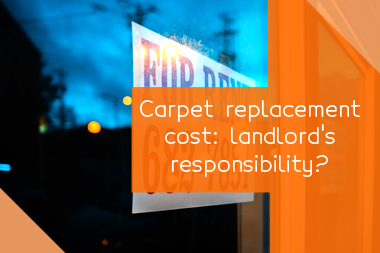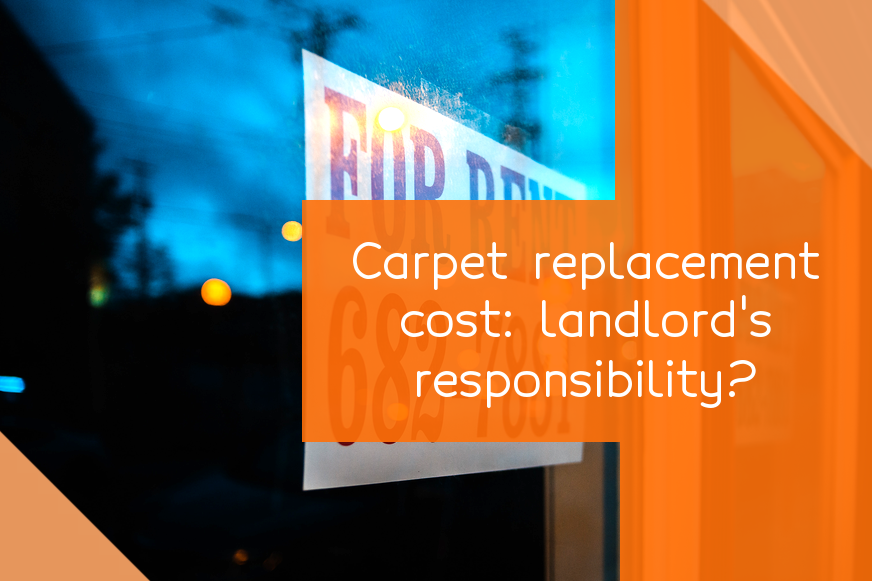I can accurately provide information about what the law says.
In general, landlords are allowed to charge tenants for damages they directly cause to the rental property. If a tenant damages the carpets beyond "normal wear and tear", the landlord can charge them for the cost of replacing them, minus the prorated value for the remaining useful life of the carpet. However, normal wear and tear is not defined in every state, and what may be considered as normal wear and tear in one state may differ from what is considered normal wear and tear in another state. Therefore, it's best to check with your state's tenant laws or seek legal advice for specific information.
Damage vs. normal wear and tear.
Damage refers to any physical harm that is caused to a property or item which is beyond the usual wear and tear. It can be caused by various factors like accidents, abuse, misuse, intentional harm, or any other external factors. The damage can be minor or major depending on the severity of the cause. Damage usually requires repair or replacement and can lead to financial consequences for the responsible party.
Normal wear and tear refers to the minor damage or deterioration that occurs naturally over time with regular use of an item or property. It is the expected and inevitable reduction in an items quality or value, and it is not caused by any external factors. Normal wear and tear can include small scratches or dents, fading of colors, or minor deterioration of surfaces. It is considered a part of the natural depreciation of an item or property and is not the responsibility of the tenant or owner to repair.
When landlords should pay for carpets
- 1If the carpet was damaged due to normal wear and tear, such as fading or matting from foot traffic, it is the landlord's responsibility to pay for replacement or cleaning.
- 2If the tenant causes damage to the carpet beyond normal wear and tear, such as spills, stains, or burns, the tenant may be responsible for paying for repairs or cleaning.
- 3If the carpet needs to be replaced due to age or deterioration, this is typically the landlord's responsibility to pay for.
- 4In some cases, the landlord and tenant may negotiate and agree to share the cost of carpet replacement or repair.
It's important to review the lease agreement and consult with a lawyer to determine the specific responsibilities of the landlord and tenant in regards to carpet maintenance and replacement.
When to charge tenants for carpets
I can provide some guidelines on when landlords can charge tenants for carpets.
- 1Damage beyond normal wear and tear: If the tenant has caused damage to the carpet beyond normal wear and tear, the landlord can charge the tenant for repairs or replacement.
- 2Stains and odors: If the tenant has caused permanent stains or unpleasant odors on the carpet, the landlord can charge the tenant for professional cleaning or replacement.
- 3Written agreement: If the tenancy agreement clearly states that the tenant is responsible for the maintenance and repair of carpets, the landlord can charge the tenant for any damages or wear and tear.
- 4Depreciation: If the carpet has reached the end of its useful life, the landlord can charge the tenant for replacement depending on the depreciation rate.
It is important to note that landlords cannot charge indiscriminately for carpets. The law varies by state and country, and landlords need to follow the guidelines set by the applicable authority. Additionally, landlords should provide an itemized bill to ensure transparency and avoid disputes.
What is the tenant objects
If the tenant objects, the landlord should try to understand the reason for the objection. The landlord should also explain why the proposed changes are necessary or beneficial for both parties. If the tenant still refuses, the landlord should review the terms of the lease agreement to determine whether there are any provisions that permit or prohibit the proposed changes.
If there are provisions in the lease that allow for the changes, the landlord can potentially proceed with the changes if they provide proper notice to the tenant, pursuant to state law.
If the proposed changes are not permitted by the lease agreement, the landlord should consider negotiating with the tenant to find a compromise that works for both parties. If negotiations fail, the landlord may need to seek legal counsel. In some cases, it may be necessary to take legal action to enforce the terms of the lease agreement.
How to calculate security deposit deductions for carpets.
- 1. Document the condition of the carpet: Before the tenant moves in, conduct a detailed inspection of the rental unit, including the carpet. Take photos or videos and make written notes about any existing damages, stains, holes, burns, or wear and tear. Provide the tenant with a copy of the move-in inspection report and ask them to sign it to acknowledge the accuracy.
- 2. Schedule a move-out inspection: When the tenant gives you notice or the lease expires, schedule a mutually convenient date and time for a move-out inspection. Remind the tenant in writing about their responsibility to return the property in the same condition as when they received it, except for normal wear and tear.
- 3. Inspect the carpet: At the move-out inspection, inspect the carpet for any new damages or excessive wear and tear that go beyond normal use. Look for stains, pet odors, rips, tears, burns, water damage, or any other issues that require professional cleaning or repair. Use the move-in inspection report as a reference to compare the condition before and after the tenancy.
- 4. Estimate the cost of repairs or cleaning: If you find any damages or excessive wear and tear, estimate the cost of repairing or replacing the affected areas. If the carpet is stained or dirty but can be cleaned, get a quote from a professional carpet cleaner. If the carpet is beyond repair or cleaning, estimate the cost of replacing it entirely.
- 5. Deduct the amount from the security deposit: As a landlord or property manager, you have the right to deduct the cost of repairing or replacing the carpets from the tenant's security deposit. However, you must provide the tenant with a written itemized list of the deductions and their cost, along with any remaining amount of the deposit that will be refunded to them. You may also need to follow your state or local laws regarding security deposit deductions, notification, and timelines.
- 6. Keep records: Keep a copy of the move-in and move-out inspection reports, photos, videos, and invoices or receipts for any repairs or cleaning. You may need to present them as evidence in case of a dispute with the tenant or a legal challenge.
Again, these are general guidelines, and landlords or property managers should seek legal advice and comply with their state or local regulations.
Just one more thing: if you liked the article, please like us on social media and share this article with friends.



